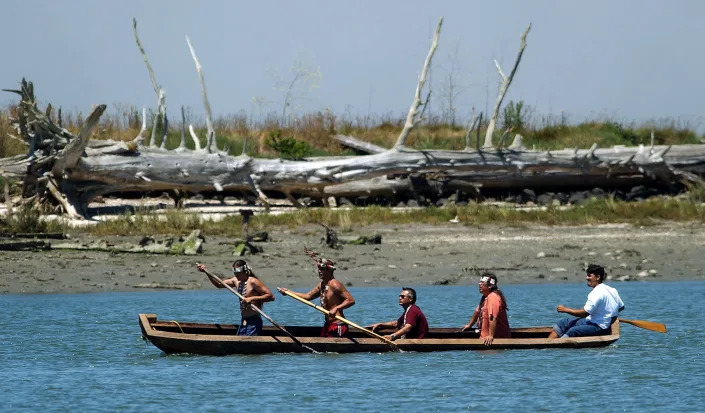IT'S A CHUPACABRA
Wily 'coyote' -- or maybe dog -- on lam after clawing out of Mt. Pleasant Township shelterRenatta Signorini, Tribune-Review, Greensburg, Pa.
Thu, January 27, 2022, 12:04 PM·2 min read
Jan. 27—An animal that was undergoing testing to determine if it is a dog or coyote escaped from the Mt. Pleasant Township wildlife rehabilitation center where it was being treated for mange.
Rescuers were searching for the creature Thursday, said wildlife rehabilitator Morgan Barron. Wildlife Works founder, director and senior rehabilitator Beth Shoaf discouraged anyone searching for the animal or trying to capture it.
"If they come across it, they should contact our office so we can have properly trained staff attempt to rescue and capture," Barron said. "They should not try to catch it themselves for the safety of them and the animal."
Barron operates the satellite location for Youngwood-based Wildlife Works. The nonprofit can be reached at 724-925-6862.
Barron found a destroyed empty cage and scratches on the walls Thursday morning when she went to check on the animal. It apparently chewed on a rubber seal around the window until it was able to push it open and tear through the screen.
"This was a concerted effort, the animal really wanted to get out of there," Shoaf said, adding that the organization's volunteers are devastated over the escape.
"We're sick. We're sick because so many people were invested in his well being, besides us," she said. "And then now he's out there again."
Rescuers encouraged residents to check their trail cameras and keep eye out near their homes.
The four-legged, 37-pound animal was being treated for mange after a Fairfield woman spotted it Jan. 17 outside her home. Rescuers weren't sure if it was a dog or coyote so TJ's Rescue Hideaway transported it to Barron, who was caring for it around the clock but limiting human exposure.
"Having been with us for a week, I think he started feeling better and actually doing what he did makes me really, really think it's a coyote as opposed to something else," Shoaf said.
Barron reported Tuesday that the animal was becoming more defensive as medicine kicked in. She said Thursday that its demeanor hadn't changed much.
"Still just laid there and tracked me with his eyes," Barron said.
DNA results are expected in the next couple weeks. Barron intended to release the animal back into the wild if it is a coyote. TJ's Rescue Hideaway was going to regain control if it is a dog.
The creature could return — Barron set up traps and it could seek out help on its own again. The mange condition will continue because the treatment did not last long enough.
Shoaf said she appreciates all of the support and donations the creature has brought to her organization, which rescues songbirds, raptors, raccoons, fawns, small mammals, waterfowl, reptiles and other wildlife. For details on how to donate, visit wildlifeworksinc.org.
Renatta Signorini is a Tribune-Review staff writer. You can contact Renatta at 724-837-5374, rsignorini@triblive.com or via Twitter .

















